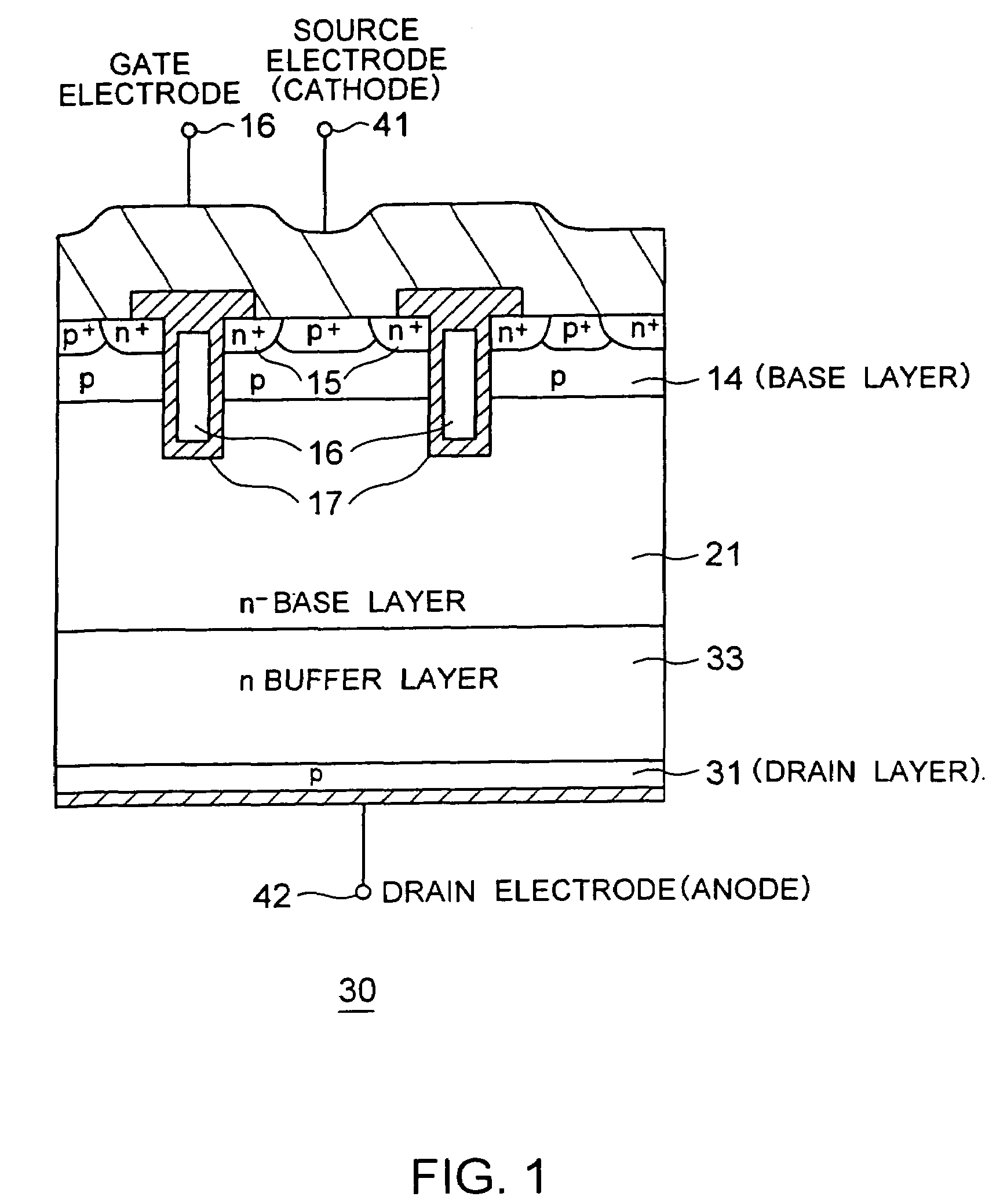Insulated gate semiconductor device
- Summary
- Abstract
- Description
- Claims
- Application Information
AI Technical Summary
Benefits of technology
Problems solved by technology
Method used
Image
Examples
Embodiment Construction
[0040]Some embodiments of the invention will now be explained below with reference to the drawings. In FIGS. 1, 8 and 9, the same components as those of FIG. 10 are labeled with common reference numerals.
[0041]FIG. 1 is a cross-sectional view of a punch-through IGBT 30 taken as an insulated gate semiconductor device according to the first embodiment of the invention. IGBT 30 includes an n−-type base layer 21, and a p-type base layer 14 formed on the n-type base layer 21. The p-type base layer 14 includes an n+-type source layer 15 formed in a selective top surface region thereof. A p-type drain layer (anode) 31 underlies the bottom surface of the n-type base layer 21 opposite from the top surface thereof. A gate electrode 16 is formed in the n-type base layer 21 and in the p-type base layer 14 so as to make a channel in the p-type base layer 14 for electrical conduction between the source layer 15 and the n-type base layer 21. The gate electrode 16 is insulated from the n-type base ...
PUM
 Login to View More
Login to View More Abstract
Description
Claims
Application Information
 Login to View More
Login to View More - R&D
- Intellectual Property
- Life Sciences
- Materials
- Tech Scout
- Unparalleled Data Quality
- Higher Quality Content
- 60% Fewer Hallucinations
Browse by: Latest US Patents, China's latest patents, Technical Efficacy Thesaurus, Application Domain, Technology Topic, Popular Technical Reports.
© 2025 PatSnap. All rights reserved.Legal|Privacy policy|Modern Slavery Act Transparency Statement|Sitemap|About US| Contact US: help@patsnap.com



